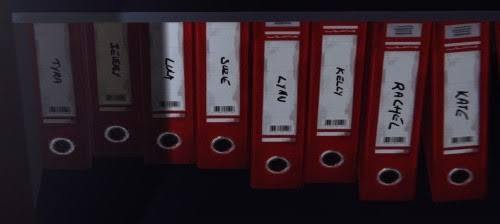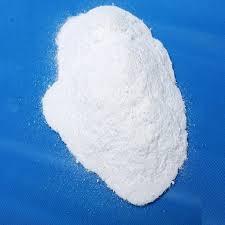#chlor price
Text
























Life is Strange - Don't Nod - (2015)
#video game#life is strange#dont nod#dontnod#square enix#squareenix#episode#max caulfield#chlor price#kate marsh#david madsen#rachel amber#mark jefferson#joyce price#raymond wells#principal wells#victoria chase#nathan prescott#the prescotts#sean prescott#taylor christensen#dana ward#juliet watson#zachary riggins#logan robertson#brooke scott#stella hill#william price#trevor yard
263 notes
·
View notes
Text
Caustic Soda Procurement Intelligence: A Deep Dive
The caustic soda category is anticipated to grow at a CAGR of 5.1% from 2023 to 2030. In 2022, the category size was estimated to be valued at USD 40.6 billion with the Asia-Pacific region's dominance as a result of a rise in raw material industrial demand for textiles, paper, and other materials as well as manufacturing hubs. The category is escalated globally, owing prominently to its intense abilities and importance across both the residential sector & industries. It is a versatile compound that finds numerous applications across different industries from primary usage in detergents, packaging, and treatment to food, chemical, and automobile. Another factor fueling the category growth is its use in processes such as, making drugs and bauxite purification. Being a primary product for many industries, demand for it remains high, whether it is for parts of EV in cars or the water treatment business. The category is also widely utilized in the extraction of bauxite, and demand for it will rise parallelly as the region's production of aluminum rises.
An increase in innovation and development in production techniques would present potential sustainable growth opportunities for the category. When compared to caustic soda generated conventionally, Vynova renewable caustic soda has a much smaller carbon footprint, as it is manufactured using renewable electricity. It makes it possible for clients in a variety of industries to produce more environmentally friendly goods. Westlake's low-carbon caustic soda, sold under the trade name GreenVin, has a lower carbon footprint by more than 30% than standard Westlake Vinnolit caustic soda. Hamwha, a leading chemical company, increases the amount of caustic soda it produces for advancing and developing the usage of elements in sustainable transportation - specifically EV production.
With numerous suppliers and producers, from large multinational chemical firms to smaller regional or local businesses, the category is highly fragmented. Due to the variety of applications in the category, there are numerous niche markets created. Each industry has its own manufacturing capacity, distribution system, and consumer. The distribution of the categories is influenced by industry demand, economic situations, legal and regulatory frameworks, and technological development. In 2022, Asia Pacific accounted for a large portion of the market. China dominates both production and demand for caustic soda, as it does with so many other chemical products. It holds around half of the world's caustic soda manufacturing capacity. Shale gas output in the US has significantly increased recently, rising category demand.
Order your copy of the Caustic Soda Procurement Intelligence Report, 2023 - 2030, published by Grand View Research, to get more details regarding day one, quick wins, portfolio analysis, key negotiation strategies of key suppliers, and low-cost/best-cost sourcing analysis
Approximately 99.5% of caustic soda consumed worldwide is produced through the conventional chlor-alkali process. Raw materials, production volume, machinery, etc. are the cost components of the category. Energy usage also accounts for a sizable amount of variable costs. Prices for caustic soda increased globally, averaging USD 769/MT in the first quarter of 2023 compared to last year’s average USD 719/MT due to factors such as supply chain disruption and rising energy costs. Sales of caustic soda increased by 17% in Q1FY23 to 278,000 tonnes, with a utilization rate of 89%. Following Russia's invasion of Ukraine, China took over the role of Russia and Ukraine as suppliers of chlor-alkali products to Europe, which resulted in shortages in the Asian domestic market and an increase in local pricing. Due to the oversaturation of the market in Europe brought on by cheap imports from China, the prices remained lower in the region.
The category can be sourced from various methods, primarily through the domestic market. Due to the simple accessibility of production's raw materials, many nations have domestic manufacturing facilities. It provides advantages like lower shipping costs, shorter lead times, and support for the local economy. As per the industry specification quality testing should be done to meet standards and requirements. Suppliers that demonstrate sustainable practices is another factor influencing sourcing intelligence.
Browse through Grand View Research’s collection of procurement intelligence studies:
Chemical Management Services Procurement Intelligence Report, 2023 - 2030 (Revenue Forecast, Supplier Ranking & Matrix, Emerging Technologies, Pricing Models, Cost Structure, Engagement & Operating Model, Competitive Landscape)
Plasticizers Procurement Intelligence Report, 2023 - 2030 (Revenue Forecast, Supplier Ranking & Matrix, Emerging Technologies, Pricing Models, Cost Structure, Engagement & Operating Model, Competitive Landscape)
Caustic Soda Procurement Intelligence Report Scope
Caustic Soda Category Growth Rate: CAGR 5.1% from 2023 to 2030
Pricing growth Outlook: 2% - 3% (annual)
Pricing Models: Spot pricing, Production and processing pricing, Quality standards pricing, Competition based pricing
Supplier Selection Scope: Cost and pricing, Past engagements, Production capacity, Supply chain and Logistics
Supplier selection criteria: Quality standards, production capacity, pricing, supply chain transparency, transportation and handling, technical specifications, operational capabilities, regulatory standards and mandates, category innovations, and others.
Report Coverage: Revenue forecast, supplier ranking, supplier matrix, emerging technology, pricing models, cost structure, competitive landscape, growth factors, trends, engagement, and operating model
Key companies
Dow Chemical Company
PPG Industries
Hanwha Chemical Corporation
INEOS Group
Solvay SA
BASF SE
FMC Corporation
Occidental Petroleum Corporation
Formosa Plastics Group
Tosoh Corporation
Brief about Pipeline by Grand View Research:
A smart and effective supply chain is essential for growth in any organization. Pipeline division at Grand View Research provides detailed insights on every aspect of supply chain, which helps in efficient procurement decisions.
Our services include (not limited to):
• Market Intelligence involving – market size and forecast, growth factors, and driving trends
• Price and Cost Intelligence – pricing models adopted for the category, total cost of ownerships
• Supplier Intelligence – rich insight on supplier landscape, and identifies suppliers who are dominating, emerging, lounging, and specializing
• Sourcing / Procurement Intelligence – best practices followed in the industry, identifying standard KPIs and SLAs, peer analysis, negotiation strategies to be utilized with the suppliers, and best suited countries for sourcing to minimize supply chain disruptions
0 notes
Text
Caustic Soda Prices Trend | Pricing | Database | Index | News | Chart
North America
In the first quarter of 2024, the North American Caustic Soda market experienced a continued upward trend in pricing. The market remained bullish, characterized by limited inventories and moderate demand. However, several challenges arose, including logistical disruptions and rising freight rates due to ongoing turmoil in the Red Sea region.
Potential disruptions to shipping routes through Baltimore were partially offset by additional storage capacity in nearby areas like Philadelphia. Nonetheless, even minor logistical challenges could impact regional pricing. The closure of the Port of Baltimore coincided with increased Chlor-Alkali rates in Europe, potentially leading to surplus Caustic Soda being sold to the US East Coast. Concerns about low inventory levels in northeastern US tanks persisted, though there had been slight improvement recently, allowing for more consistent price increases compared to regions with better supply and logistics. This stability was primarily driven by constrained production volumes and increased demand from the downstream alumina sector.
The US Caustic Soda market saw an 11% price increase compared to the previous quarter, with a notable 6.8% rise observed in the latter half of Q1. The latest recorded price for Caustic Soda 50% Liquid FOB Texas during March 2024 was USD 362/MT.
Get Real Time Prices for Caustic Soda: https://www.chemanalyst.com/Pricing-data/caustic-soda-3
APAC
The first quarter of 2024 presented significant challenges for the Caustic Soda market in the APAC region, particularly in Japan. The market continued to grapple with weak demand, supply constraints, and increased production costs, factors that had already impacted the fourth quarter of 2023. There was a decrease in demand from downstream industries such as alumina and cleaning due to an economic slowdown and reduced manufacturing activities, resulting in a surplus supply of Caustic Soda.
Additionally, increased production costs, particularly energy costs, pressured manufacturers and led to tighter profit margins. The limited availability of stocks further contributed to weak market conditions. In Japan, the Caustic Soda market experienced significant price fluctuations during Q1 2024, mainly due to supply constraints and limited downstream demand. Reduced production activities and inventory digestion led to a tightening of market supply. Furthermore, weak demand from the aluminum industry, coupled with increased input costs, impacted prices in Japan. Despite these challenges, prices remained relatively positive due to midstream shipments and average spot circulation. At the end of Q1, the price of Caustic Soda Flakes FOB Tokyo stood at USD 366/MT.
These challenges were compounded by plant shutdowns, such as the Sinopec Qilu Company in Zibo City, Shandong, due to a major fire incident. Despite these difficulties, the market managed to stabilize, and prices saw a slight increase during this period.
Europe
The European Caustic Soda market faced significant challenges in Q1 2024, with various factors impacting the industry. Plant shutdowns occurred in the region, contributing to an uncertain market due to weak downstream demand and limited supplies. For instance, Nobian GmbH Werk Bitterfeld in Germany experienced a shutdown due to technical issues, with operations expected to resume by early April. Inovyn in France also faced temporary shutdowns due to technical issues, but production resumed by mid-March.
Caustic Soda prices surged in the German market due to increased downstream alumina demand and constrained supplies. The downstream aluminum industry, a gauge for economic vitality, was on the brink of recovery, driven by the expected rise in global demand. A rebound in European consumption played a crucial role in this industrial resurgence. However, challenges emerged as Russian aluminum exports to the European Union were projected to decline due to ongoing trade sanctions. Despite this, the US aluminum industry remained a symbol of growth, undeterred by a GDP slowdown, illustrating the intricate dynamics of global economic interactions.
Thus, Caustic Soda prices in Germany reflected the positive signs of revival in downstream orders, while the supply chain grappled with challenges, including logistical disruptions and the need to reroute paths due to turmoil in the Red Sea.
Get Real Time Prices for Caustic Soda: https://www.chemanalyst.com/Pricing-data/caustic-soda-3
Contact Us:
ChemAnalyst
GmbH - S-01, 2.floor, Subbelrather Straße,
15a Cologne, 50823, Germany
Call: +49-221-6505-8833
Email: [email protected]
Website: https://www.chemanalyst.com
#Caustic Soda#Caustic Soda Price#Caustic Soda Prices#Caustic Soda Price Monitor#Caustic Soda News#Caustic Soda Database
0 notes
Text
Coal Tar Price Trends & Forecasts
Coal tar is a thick, dark, viscous liquid. It is a byproduct of the carbonization of coal. The carbonization process is used to make coke for the production of steel. The tar is a complex mixture of organic substances, such as aromatic hydrocarbons, phenols, and other chemicals. It is distinguished by a powerful, pungent smell. The tar also has high carbon content and extreme flammability.
Request for Real-Time Coal Tar Prices: https://procurementresource.com/resource-center/coal-tar-price-trends/pricerequest
It is soluble in organic solvents but insoluble in water. The production of roofing materials, wood preservatives, and sealants all benefit from the exceptional waterproofing and preservation qualities of coal tar. Additionally, it is used in the production of medicines, dyes, and the treatment of skin diseases.
Key Details About the Coal Tar Price Trend:
Procurement Resource does an in-depth analysis of the price trend to bring forth the monthly, quarterly, half-yearly, and yearly information on the Coal Tar price in its latest pricing dashboard. The detailed assessment deeply explores the facts about the product, price change over the weeks, months, and years, key players, industrial uses, and drivers propelling the market and price trends.
Each price record is linked to an easy-to-use graphing device dated back to 2014, which offers a series of functionalities; customization of price currencies and units and downloading of price information as excel files that can be used offline.
The Coal Tar Price chart, including India Iron price, USA Iron price, pricing database, and analysis can prove valuable for procurement managers, directors, and decision-makers to build up their strongly backed-up strategic insights to attain progress and profitability in the business.
Industrial Uses Impacting Coal Tar Price Trend:
The production of roofing materials is one prominent use for coal tar. It is a crucial component in the production of coal tar pitch, which gives roofing shingles, membranes, and coatings great weather resistance and waterproofing. Wood preservation is another significant application for coal tar. Creosote and other wood preservatives based on coal tar are used to guard wood against fungus, insect infestation, and degradation. They are frequently used on railway ties, utility poles and outside timber buildings. In addition, it is also used in the production of pigments and dyes. In the pharmaceutical industry, several drugs and topical treatments also use coal tar. It is effective in treating skin disorders like psoriasis, eczema, and dandruff as it has antibacterial, anti-inflammatory, and keratolytic qualities. Additionally, coal tar is employed as a binder in the manufacture of carbon electrodes for the aluminum and steel industries as well as in the creation of certain compounds, such as artificial flavors and scents.
Key Players:
INEOS Chlor
INOVYN
Altair Chimica
Dover Chemical Corporation
Quimica del Cinca
LEUNA-Tenside GmbH
Adity Birla Chemicals
Flow Tech Group
NCO Chlorchem
Qualice LLC
About Us:
Procurement Resource offers in-depth research on product pricing and market insights for more than 500 chemicals, commodities, and utilities updated daily, weekly, monthly, and annually. It is a cost-effective, one-stop solution for all your market research requirements, irrespective of which part of the value chain you represent.
We have a team of highly experienced analysts who perform comprehensive research to deliver our clients the newest and most up-to-date market reports, cost models, price analysis, benchmarking, and category insights, which help in streamlining the procurement process for our clientele. Our team tracks the prices and production costs of a wide variety of goods and commodities, hence, providing you with the latest and consistent data.
To get real-time facts and insights to help our customers, we work with a varied range of procurement teams across industries. At Procurement Resource, we support our clients, with up-to-date and pioneering practices in the industry, to understand procurement methods, supply chain, and industry trends, so that they can build strategies to achieve maximum growth.
Contact Us:
Company Name: Procurement Resource
Contact Person: Leo Frank
Email: [email protected]
Toll-Free Number: USA & Canada – Phone no: +1 307 363 1045 | UK – Phone no: +44 7537 132103 | Asia-Pacific (APAC) – Phone no: +91 1203185500
Address: 30 North Gould Street, Sheridan, WY 82801, USA
0 notes
Text
liquid chlorine Prices Trend, Monitor, News & Forecast | ChemAnalyst

Liquid chlorine prices have experienced fluctuations influenced by various factors, including global market dynamics, industrial demand, and production costs. Understanding these price movements requires a comprehensive analysis of supply and demand dynamics, regulatory changes, and macroeconomic indicators.
The pricing of liquid chlorine is significantly impacted by the balance between supply and demand within the chemical and water treatment industries. Liquid chlorine, a chemical compound widely used for water disinfection, bleaching, and chemical synthesis, finds applications across diverse sectors. Disruptions in the supply chain, such as fluctuations in chlorine gas availability, manufacturing capacity, or transportation logistics, can affect the availability and cost of liquid chlorine, thereby influencing its market price.
Industrial demand plays a pivotal role in determining liquid chlorine prices. Industries such as water treatment, pulp and paper manufacturing, and chemical synthesis rely heavily on liquid chlorine for its disinfection and bleaching properties. Fluctuations in demand from these sectors, influenced by factors such as seasonal variations, regulatory requirements, and economic conditions, can lead to price volatility for liquid chlorine.
Get Real-Time liquid chlorine Prices : https://www.chemanalyst.com/Pricing-data/liquid-chlorine-45
Raw material costs significantly influence liquid chlorine prices. The price of raw materials such as salt and electricity, which are used in chlorine production via the chlor-alkali process, can fluctuate due to changes in global supply and demand dynamics, energy costs, and mining conditions. Any significant increase in raw material costs can translate into higher production costs for liquid chlorine manufacturers, thereby exerting upward pressure on prices.
Macroeconomic indicators, such as GDP growth, industrial output, and infrastructure investments, can indirectly impact liquid chlorine prices by affecting overall industrial activity and demand for water treatment and bleaching products. Economic downturns or slowdowns in major manufacturing regions may lead to decreased demand and downward pressure on prices. Conversely, robust economic growth and increased infrastructure spending can support higher prices for liquid chlorine by stimulating demand for water treatment chemicals.
Regulatory changes and quality standards also play a role in shaping liquid chlorine prices. Government regulations on water quality standards, environmental protection, and chemical safety can impact production costs and market access for liquid chlorine manufacturers. Compliance with these regulations may require investments in technology and process improvements, which could influence pricing dynamics.
Looking ahead, several factors are expected to continue influencing liquid chlorine prices. Continued growth in sectors such as water treatment, pulp and paper manufacturing, and chemical synthesis, coupled with increasing demand for disinfection and bleaching products, is likely to drive sustained demand for liquid chlorine. Moreover, advancements in manufacturing technologies and the development of new applications could lead to changes in market dynamics and price levels for liquid chlorine.
In conclusion, liquid chlorine prices are subject to a complex interplay of factors including supply and demand dynamics, industrial trends, raw material costs, regulatory changes, and macroeconomic indicators. Stakeholders in the chemical, water treatment, and manufacturing industries must closely monitor these factors to anticipate price movements and make informed decisions. As industries evolve and consumer preferences change, navigating the dynamic landscape of liquid chlorine pricing will remain a key challenge for industry participants.
Get Real-Time liquid chlorine Prices : https://www.chemanalyst.com/Pricing-data/liquid-chlorine-45
ChemAnalyst
GmbH — S-01, 2.floor, Subbelrather Straße,
15a Cologne, 50823, Germany
Call: +49–221–6505–8833
Email: [email protected]
Website: https://www.chemanalyst.com
0 notes
Text
Ethylene Dichloride (EDC) Market Scope, Demand, Report 2023-2030
BlueWeave Consulting, a leading strategic consulting and market research firm, in its recent study, estimated the Global Ethylene Dichloride (EDC) Market size by value at USD 31.73 billion in 2023. During the forecast period between 2024 and 2030, BlueWeave expects the Global Ethylene Dichloride (EDC) Market size to expand at a CAGR of 6.25% reaching a value of USD 38.02 billion by 2030. The Global Ethylene Dichloride (EDC) Market is propelled by the increasing electronics sector in emerging economies and the rising integration of EDC in composite applications. Also, a noteworthy surge is foreseen, driven by escalating demand from research institutes and multinational corporations engaged in extensive research and development activities. The electronics sector stands out as a crucial catalyst for the market's growth. Within the electronics industry, the product plays a vital role in diverse applications, including batteries, capacitors, solar cells, computers, microchips, smartphones, and laptops. Its popularity in electronics is attributed to its outstanding characteristics such as electrical conductivity, thermal conductivity, lightweight nature, and mechanical durability, rendering it suitable for managing high voltages. These distinctive properties position it as a highly significant material in the electronics domain, with expectations that it will serve as a seamless substitute for carbon nanotubes and silicon across various applications.
By volume, BlueWeave estimated the Global Ethylene Dichloride (EDC) Market size at 45.2 million tons in 2023. During the forecast period between 2024 and 2030, BlueWeave expects the Global Ethylene Dichloride (EDC) Market size by volume is projected to grow at a CAGR of 5.89% reaching the volume of 58.6 million tons by 2030. In April 2023, PT Chandra Asri Petrochemical Tbk (Chandra Asri), a prominent integrated petrochemical firm in Indonesia, entered a Memorandum of Understanding (MoU) with the Indonesia Investment Authority (INA) to build a sizable chlor-alkali plant in Indonesia. Upon completion, the plant is set to produce over 400 thousand tons annually of caustic soda and 500 thousand tons annually of ethylene dichloride.
Impact of Escalating Geopolitical Tensions on Global Ethylene Dichloride (EDC) Market
Geopolitical tensions can have a multifaceted impact on the Global Ethylene Dichloride (EDC) Market. These tensions can disrupt the supply chain, particularly for crucial raw materials such as ethane and chlorine, which are integral to EDC production. Trade restrictions, sanctions, or conflicts in key producing regions can lead to supply shortages, driving up prices and creating uncertainty in the market. Additionally, geopolitical instability may deter investment in EDC production facilities or hinder market expansion efforts in affected regions. Overall, the volatility and uncertainty stemming from escalating geopolitical tensions pose challenges to the stability and growth of the Global EDC Market, necessitating strategic risk management and diversification efforts by industry stakeholders.
Sample Request @ https://www.blueweaveconsulting.com/report/ethylene-dichloride-market/report-sample
Global Ethylene Dichloride (EDC) Market
Segmental Information
Global Ethylene Dichloride (EDC) Market – By End User
By end user, the Global Ethylene Dichloride (EDC) Market is divided into Construction, Automotive, Packaging, Furniture, and Medical segments. The construction segment holds the highest share in the Global Ethylene Dichloride (EDC) Market by end user. It is primarily due to the widespread adoption of ethylene dichloride in PVC resin manufacturing, a critical element in diverse construction materials. The substantial demand for PVC in various applications like pipes, fittings, and profiles will notably bolster market share, solidifying the construction segment's pivotal role in the overall ethylene dichloride market.
Global Ethylene Dichloride (EDC) Market – By Region
The in-depth research report on the Global Ethylene Dichloride (EDC) Market covers the market in a number of major countries across five regions: North America, Europe, Asia Pacific, Latin America, and Middle East and Africa. North America region holds the highest share in the Global Ethylene Dichloride (EDC) Market and is expected to maintain its dominance during the forecast period. The expansion necessitated the extension of the PVC production chain at the Plaquemine, Louisiana complex, which now features a new vinyl chloride monomer unit capable of producing approximately 1 million metric tons per year, alongside an ethylene dichloride unit with an annual production capacity of 680,388 metric tons. These developments are anticipated to positively impact the ethylene dichloride market forecast.
Competitive Landscape
The Global Ethylene Dichloride (EDC) Market is fragmented, with numerous players serving the market. The key players dominating the Global Ethylene Dichloride (EDC) Market include Reliance Industries Limited, Vizag chemical, Tosoh Corporation, Dow, Westlake Chemical Products, Formosa Plastics Group, PT Asahimas Chemical, Vynova Group, LG Chem, Shiv Chemicals, Ishtar Company LLC, Junsei Chemical Co., Ltd, and Olin Corporation. The key marketing strategies adopted by the players are facility expansion, product diversification, alliances, collaborations, partnerships, and acquisitions to expand their customer reach and gain a competitive edge in the overall market.
Contact Us:
BlueWeave Consulting & Research Pvt. Ltd
+1 866 658 6826 | +1 425 320 4776 | +44 1865 60 0662
0 notes
Text
Soda Ash Prices, Demand & Supply | ChemAnalyst

In the quarter concluding in September 2023, Soda Ash prices saw an increase in the North American region, driven by growing international demand and a rise in consumption within the glass industry. Compounding this trend were uncertainties in production run rates and supply disruptions caused by Hurricane Idalia, which, in turn, limited stock availability in the middle of the quarter. Additionally, the export prices of Soda Ash in the USA were affected by the rise in output costs amid high energy prices. The Soda Ash market in the US experienced bullishness due to improved international and domestic offers during the week. Consequently, market players faced a shortage of inventories to meet existing offers. From a demand perspective, Soda Ash prices gained strength in the US market, propelled by increased glass consumption in the nation's automotive industry since the beginning of August 2023. As a result, the average month-on-month price of Soda Ash light stood at USD 33/MT Ex-Works Wyoming (USA) at the conclusion of Q3.
In the quarter concluding in September 2023, the European Soda Ash market experienced a significant price increase. This rise was fueled by growing uncertainties surrounding production rates in the Chlor Alkali industry, causing caution among Soda Ash market participants. Concerns about reduced demand in the glass industry segment were overshadowed by supply reductions within the Eurozone. Additionally, industrial producer prices in August 2023 recorded a 0.6% increase and remained stable in September 2023, indicating sustained inflationary pressures in the regional market, as per data from the Eurostat Commission. In Germany, during August 2023, Soda Ash prices gained upward momentum as regional participants gradually returned from extended summer vacations and engaged in pre-purchasing activities for the upcoming month with caution. The upcoming weeks are anticipated to be more influenced by declining production rates than by low demand. Consequently, the recent upswing in Soda Ash prices in Europe in Q3 was driven by limited supplies and an increase in international and regional offers, including those from Belgium and other European countries, amid the expansion in automotive industry sales volume.
Contact US:
420 Lexington Avenue, Suite 300,
New York, NY,
United States, 10170
Email: [email protected]
Phone no.: +1 - 3322586602
#Sodaash#Sodaashprices#Sodaashmarket#Sodaashnews#Sodaashdemad#Sodaashsupply#Sodaashpricetrend#Sodaashpriceforcast#Sodaashpricemarketprice
1 note
·
View note
Text

🔥 Looking for top-quality Inconel X750 Round Bars? Look no further! 🔥
At Ozair Tradelink, we're your trusted source for premium Inconel X750 Round Bars. Whether you need them for aerospace, chemical processing, or any other high-temperature application, we've got you covered!
✅ High Corrosion Resistance ✅ Excellent Strength at Elevated Temperatures ✅ Outstanding Oxidation Resistance
Why choose Ozair Tradelink? 🛠️ Extensive Inventory 🌍 Global Shipping 💯 Quality Assurance 🔒 Competitive Pricing
Get in touch with us today and experience the reliability, durability, and performance that our Inconel X750 Round Bars provide. Your success is our priority!
1 note
·
View note
Text
Chlorine Market Size, Share, Demand, Growth & Trends by 2032
The global chlorine market is worth US$ 14.36 Billion as of now and expected to reach US$ 21.86 Billion by the year 2032 at a CAGR of 4.3% between 2022 and 2032.
The end-uses of chlorine and its derivatives include paints & coatings, adhesives, food processing, plastic, cosmetics, pharmaceuticals, water treatment, and likewise.
Chlorine acts as a raw material to produce a series of chemicals. For instance – it is vital regarding production of PVC (Polyvinyl Chloride). The applications of PVC include automotive, construction, composite manufacturing.
At the same time, it needs to be noted that handling as well as transporting chlorine comes with risks, as chlorine falls in the category of toxicological and inflammable substances. It also ends up enhancing the other materials’ combustion rate. Regulatory bodies like the US FDA, EPA, WHO, IARC, and likewise are imposing stern restrictions in the interest of safeguarding the environment.
For details on vendors and their offerings – Request a sample report: https://www.futuremarketinsights.com/reports/sample/rep-gb-591
Additionally, production of chlorine is energy-intensive, which adds to overheads. In the last few years, countries like China have over-produced chlorine. As such, the prices have come down drastically. This could be problematic to the manufacturers regarding the way they cover the overall costs. The demand won’t cease, as market is witnessing a shift to membrane technology from mercury cell technology.
Regions like India, Austria, Brazil, the UK, Sweden, the US, France, and Spain are heavily investing in the building & construction sector. This asks for an exorbitant demand for PVC. Thus, the chlorine market, in spite of the over-reactive nature of chlorine, is expected to go great guns going forward. Future Market Insights has highlighted these findings with future perspectives in its latest market study entitled ‘Chlorine Market’. It has its indigenous team of analysts and consultants to deploy a bottom-up approach in its primary, secondary, and tertiary modes of research.
“With agrochemical and pharmaceutical verticals witnessing an upsurge in EDC (ethylene dichloride) and PVC (polyvinyl chloride), the chlorine market is expected to grow remarkably in the near future”, says an analyst from Future Market Insights.
Key Takeaways from Chlorine Market
· North America holds close to 18% of the market share. This could be attributed to the US housing several primary manufacturers. Also, chlorine, along with its derivatives, are widely sold for producing prescription chemicals sold al across Canada and the US.
· Europe is expected to show steadiness in the chlorine market in the forecast period, especially amidst the economic slowdown faced by the UK.
· The Asia-Pacific is expected to witness a marked growth in chlorine market in the forecast period due to growing demand for caustic soda (which is by-product of chlorine production).
Browse Full Report: https://www.futuremarketinsights.com/reports/chlorine-market
Competitive Doorstep
· INOVYN, in January 2021, got selected by Koyuncu Group for supplying chlor-alkali technology at novel manufacturing facility in Konya, Turkey. BICHLOR bipolar electrolyzers would be provided by INOVYN for new facility for producing hydrochloric acid, chlorine, and sodium hypochlorite. Production began at the start of 2022 and claims to have manufacturing capacity of 50K tons every year.
· Potasse et Produits Chimiques SAS, in July 2019, did join Vynova Group. Site based out of Thann (France) has been rechristened to ‘Vynova PPC SAS’ and included under Vynova umbrella. It contains a membrane electrolysis plant and manufactures liquid potassium hydroxide (KOH) and chlorine.
· NX Filtration does develop hollow fiber modules and membranes for ultrafiltration and nanofiltration. The ultrafiltration membrane’s ‘Ultra’ range is based on modified PES (polyethersulfone) chemistry retaining yeast, microorganisms, and floating particles at the time of facilitating salts, proteins, and petite organic molecules. The membranes are known for having superlative tolerance to chlorine, with higher pH.
Unleashing the Macros of Chlorine Market
· The research study is based on application (isocyanates and oxygenates, EDC/PVC, inorganic chemicals, chloromethanes, solvents and electrolysis, pharmaceuticals, and electronics), and by end-use (pulp and paper, water treatment, chemicals, plastics, pesticide, and durable pipes).
· Growing demand for various chemical intermediates like acid chlorides, hydrochloric acid, metal chlorides, hypochloric acid, chloroform, and the other chlorine derivatives would certainly keep the cash registers ringing for chlorine market.
0 notes
Text
generic female names
Adirah Adrie Adrinn Akayla Aleigh Alennie Aleslie Alessa Alesta Alisee Allene Alory Alvira Amaribeth Amarine Ameliane Angeliana Angera Angleigh Antaliki Aquaye Ariah Arienne Arlen Arrin Asundy Athea Avanne Avanora Avida Belvin Bentrage Bianalyn Biley Bindice Blesette Bonnet Brashayna Breen Breena Bresiri Brian Brianny Bryanne Bryleen Cabrisa Calicia Callornay Calphiel Candolyne Candy Carel Caronwen Cassi Cathley Catrinia Catrione Cecia Celen Celicia Celyn Celynnes Chaela Chaelaira Chaitlyn Channette Charina Charl Charleen Chelina Chelma Cheresa Cheylagh Chianna Chinette Chiquiri Chlor Chlore Chrin Chryst Clareena Cleona Clotilia Clotte Coletta Commonia Connalia Conorma Consue Consuelle Contanish Corea Corgit Cosea Crayler Crishawn Cydem Cyntha Dacquela Daique Danity Dariann Darsay Davia Debra Debray Deirdrea Delia Dence Dester Diley Domina Dorah Doronwen Drucie Earla Earleen Earsay Edesira Elandris Elenoria Elinda Elviraja Emerasia Emoona Emoreva Engrada Ephilia Ephingue Erinia Erliz Ermiona Estefana Estina Etity Eudoreli Eulasia Fabrin Faramieke Fareen Faricia Faterina Favera Fawnee Flore Florie Foree Futumn Gabria Galana Galassica Gammalie Gennife Glena Glimmy Haithanna Haletta Handa Hapsody Havella Hayler Helia Herylli Holetice Ianny Iesli Ilond Ilsey Isabiana Iyone Jacia Jacine Jaciyapa Jacquita Janda Janetta Janetty Jeannona Jenekah Jennie Jessielle Jezebecca Jillon Jocelen Joeley Johne Jolen Jonia Jorden Julindy Junia Kalia Kandela Karlandy Kasia Katemia Katerra Katha Katima Kaylyne Keelyn Keila Kenda Keshine Keviktory Kevina Keyanna Keyeshie Kiarah Kiaraina Kiercetha Kilia Kimberene Kimberta Kiwanden Koriah Kowyne Kristella Kyline Labethia Landa Landalu Larelenda Lathy Latia Laudith Laudra Laurena Lauropia Layna Laysanna Lazara Lemyrnay Lilla Lindy Lisona Livien Lizabella Lollie Londa Loriana Louelle Lourtney Lucill Lucilla Lucressa Lulla Luminia Lycian Lyria Mackenda Mackiel Mackierry Mackin Mackiya Madel Madia Magentia Maginique Maira Makaiya Malisa Mandra Manuary Mareen Mares Margardia Marge Marielene Maris Maristina Maryl Matte Meaganne Melin Melisona Meloress Mercelyn Messeleen Michelma Migny Milaure Mimah Mitza Monee Moonasa Mooshira Moresca Murie Nadianne Nafinia Nagic Nahila Naika Nanda Nandrah Nanna Nasia Nataliki Nevadar Nhydina Noelli Nyleigh Nysse Olita Ophina Ordesia Osiri Otherma Ouise Parlene Patiersty Paulianne Philda Phirza Phyline Phyllie Polle Price Pricky Pringtona Prude Quanna Quatelle Quince Racia Ramille Rayne Regan Renae Rindaluna Rissy Ristica Ritney Roberlin Robie Robinia Rochini Roselish Rosire Roxandra Rozanda Rozelle Rydine Ryesha Rynne Sabel Saundy Serenda Serstelle Shalla Shannasia Shaque Sharlan Sharna Shavonnah Sheema Shelba Shelen Shirae Shirza Shrena Shris Sibylla Socorma Sohandra Solen Sophianta Specilly Spene Spricael Sprindi Stalia Stelle Steprina Stera Sylaria Symetrina Symphone Talena Talida Tamie Taneth Tantanes Taribeth Tarriela Tarrina Tatienne Teranalda Terentry Teshia Thericky Thery Thizt Thrisa Tifah Torie Trice Tsunsey Twilee Twylark Umaysa Usharnold Valaysa Valdina Valene Vanasa Vangel Vangelia Veres Vestense Vibrazill Vivia Whelith Wileen Willa Wilon Wilouett Winton Wisdomin Xabela Xaphrodi Xoche Xochita Xochitlyn Xyreila Yaranza Yelle Zabella Zaideen Zaidina Zanna Zaramilly Zaydra Zayne Zelene Zellishna Zendee Zerly Zialaira Zofiya Zorina Zureezy Zurice
0 notes
Text
Demand for Chlor-Alkali is likely to remain strong in the coming months
USA has been facing shortage of chlor-alkali products ever since the winter freeze in 2021. Inventories of Caustic Soda in US were further pressurised due to Ida hurricane Q3 2021. Even though availability marginally eased in mid-December with resumption in supplies from a major producer, Vinnolit in Germany, however spate of turnarounds scheduled in Q1 2022 have again stressed players over their existing inventory levels.

Olin, a mega produced of chlor-alkali in US with a capacity of 550 MTPA Caustic Soda and 500 MTPA of Chlorine in Alabama unit, has announced temporary outage at its plant in January. The shutdown is to completely resolve the operational issues that have been interrupting the output since July 2021. Besides, another plant of Olin with altogether 3 million MTPA capacity in Texas, is up for a scheduled maintenance in Mid-March, this turnaround is likely to extend for a period of 1 month. In addition to this, Formosa Plastics with a 736 KTPA Chlor-Alkali capacity in Texas, has its turnaround scheduled in mid-February. Shintech is also planning to implement a turnaround at its chlor-alkali unit in Louisiana in March.
Series of turnarounds in Q1 are likely to adhere unprecedented pressure upon market participants of Chlor-Alkali across the region. Fearing the upcoming shortage of chlor-alkali, buyers have already begun stockpiling cargoes to abate any hurt to the output of the downstream products. As local manufacturers are already struggling with low inventory levels, they are compelled to increase the prices of the products to fetch maximum netbacks.
As per ChemAnalyst, “the demand for Chlor-Alkali is likely to remain strong in the coming months. Despite of the sturdy demand pattern, the unprecedented drop in the availability of Caustic Soda and Chlorine is expected to challenge the revenue of chlor-alkali industry in Q1. Amidst the upcoming regional shortage, demand for exports from Asia to North America is expected to witness a steep surge in the first quarter of 2022.
0 notes
Text
Global Ion-exchange Membrane Electrolyzer Assessment, With Major Companies Analysis, Regional Analysis, Breakdown Data by Application/Type
Global markets continue to sink as the coronavirus spreads, reaching over 200 countries in total by the end of March. Now the outbreak continued to grow, as the number of cases in USA, Italy, Spain, Germany, France all spiked, Europe and USA have now become the epicenter of the outbreak, Cases in China appear have steadied in April, but there?s growing concern about the overall impact to the global market. This study analysis was given on a worldwide scale, for instance, present and traditional Ion-exchange Membrane Electrolyzergrowth analysis, competitive analysis, and also the growth prospects of the central regions. The report gives an exhaustive investigation of this market at country & regional levels, and provides an analysis of the industry trends in each of the sub-segments, from sales, revenue and consumption. A quantitative and qualitative analysis of the main players in related regions is introduced, from the perspective of sales, revenue and price.
According to Researcher, the global Ion-exchange Membrane Electrolyzer market was valued at USD xxx million in 2019, and it is expected to reach a value of USD xxx million by 2026, at a CAGR of xx% over the forecast period 2021-2026. Correspondingly, the forecast analysis of Ion-exchange Membrane Electrolyzer industry comprises of Asia, North America, South America, Middle East and Africa, Europe, with the sales and revenue data in each of the sub-segments.
At the upcoming section, this report discusses industrial policy, economic environment, in addition to the fabrication processes and cost structures of the industry. And this report encompasses the fundamental dynamics of the market which include drivers, opportunities, and challenges faced by the industry. Additionally, this report showed a keen market study of the main consumers, raw material manufacturers and distributors, etc.
Download FREE Sample of this Report @ https://www.grandresearchstore.com/report-sample/global-regional-ionexchange-membrane-electrolyzer-assessment-with-major-companies-breakdown-data-by-applicationtype-836
In order to stop the spread of the COVID-19 outbreak, countries and world capital have been put under strict lockdown, bringing a total halt to major industrial production chains. It has caused supply chain disruptions for nearly three-quarters of U.S. companies, and in the second quarter, domestically consumption is likely to be hit even harder. The same situation also appeared in Europe, as the epidemic has required large-scale restrictions on the movement of people, investment, consumption and exports will all be strongly impacted by the epidemic, domestic production and consumption will plummet in the first half of 2020. We expected a U-shaped recovery in the second half of the year in USA and Europe market.
China, Japan, South Korea, India, and other Asia countries took the lead in introducing unprecedented measures to contain the virus, the market confidence in Asia-Pacific region is returning, EU and USA have relaxed its fiscal rules with maximum flexibility, this will stimulate the market demand in the second half of 2020.
Geographically, this report is segmented into several key Regions, with production, consumption, revenue (M USD), market share and growth rate of Ion-exchange Membrane Electrolyzer in these regions, from 2014 to 2026 (forecast), covering
Asia-Pacific (China, Japan, Korea, India and Southeast Asia)
North America (United States, Canada and Mexico)
Europe (Germany, France, UK, Russia and Italy)
South America (Brazil, Argentina, Columbia)
Middle East and Africa (Saudi Arabia, UAE, Egypt, Nigeria and South Africa)
Global Ion-exchange Membrane Electrolyzer market competition by top manufacturers, with production, price, revenue (value) and market share for each manufacturer; the top players including
Bluestar
Asahi Kasei
ThyssenKrupp Uhde Chlorine Engineers
INEOS
...
On the basis of product, this report displays the production, revenue, price, market share and growth rate of each type, primarily split into
ML-32NCH
n-BiTAC-880
NBZ-2.7
On the basis on the end users/applications, this report focuses on the status and outlook for major applications/end users, consumption (sales), market share and growth rate of Ion-exchange Membrane Electrolyzer for each application, including
Chlor-alkali Plants
Potassium & Desalination
If you have any special requirements, please let us know and we will offer you the report as you want.
Get the Complete Report & TOC @ https://www.grandresearchstore.com/chemicals-and-materials/global-regional-ionexchange-membrane-electrolyzer-assessment-with-major-companies-breakdown-data-by-applicationtype-836
Table of content
Table of Contents
Global Ion-exchange Membrane Electrolyzer Market by Manufacturers, Regions, Type and Application, Forecast to 2026
1 Report Overview
1.1 Definition and Specification
1.2 Report Overview
1.2.1 Manufacturers Overview
1.2.2 Regions Overview
1.2.3 Type Overview
1.2.4 Application Overview
1.3 Industrial Chain
1.3.1 Ion-exchange Membrane Electrolyzer Overall Industrial Chain
1.3.2 Upstream
1.3.3 Downstream
1.4 Industry Situation
1.4.1 Industrial Policy
1.4.2 Product Preference
1.4.3 Economic/Political Environment
1.5 SWOT Analysis
2 Market Assessment by Type
2.1 ML-32NCH Sales (K Units), Revenue (M USD) and Growth Rate 2014-2020
2.2 n-BiTAC-880 Sales (K Units), Revenue (M USD) and Growth Rate 2014-2020
2.3 NBZ-2.7 Sales (K Units), Revenue (M USD) and Growth Rate 2014-2020
3 Asia Pacific Ion-exchange Membrane Electrolyzer Market Assessment by Type
3.1 Asia Pacific Market Performance (Sales, Revenue)
3.2 Key Players in Asia Pacific
4 North America Ion-exchange Membrane Electrolyzer Market Assessment by Type
4.1 North America Market Performance (Sales, Revenue)
4.2 Key Players in North America
5 Europe Ion-exchange Membrane Electrolyzer Market Assessment by Type
4.1 Europe Market Performance (Sales, Revenue)
4.2 Key Players in Europe
6 South America Ion-exchange Membrane Electrolyzer Market Assessment by
CONTACT US:
276 5th Avenue, New York , NY 10001,United States
International: (+1) 646 781 7170 / +91 8087042414
Email: [email protected]
Follow Us On linkedin :- https://www.linkedin.com/company/grand-research-store/
1 note
·
View note
Text
About Pool Chlor of Nevada - Chemical Maintenance Experts
Visit our Website at:
http://poolchlornv.com/
And our Facebook Page at:
https://www.facebook.com/poolchlornv

Pool Chlor: The first and the largest.
The same company that has been providing superior swimming pool chemical service since we perfected the process nearly six decades ago. The residential pool experts, we have thousands of happy customers throughout the Western United States, not just in Las Vegas, Nevada. We are the company that kept your parent?s and your grandparent?s pools crystal clear.
Pool Chlor is a family owned business started by the Skinner family in 1955 in Los Angeles. We provide our original swimming pool chemical care service for residential customers in Las Vegas, Tucson, Phoenix, Fresno, Oakland and Los Angeles.
Local Las Vegas Pool Maintenance Service
While the Pool Chlor name is a national brand, we?ve been Las Vegas locals for over 30 years. Manager Brett Skinner opened Pool Chlor Las Vegas in 1984. Since then it has been our privilege to keep Southern Nevadans swimming. We?ve had decades of experience dealing the challenges of Las Vegas? legendary hard water. Trust your Las Vegas chemical pool maintenance to a local company with a proven track record in Clark County.
The Original Chemical Service
Pool Chlor started nearly 60 years ago to solve a common problem. Swimming pool owners in California had a hard time keeping the water of their pools clean and clear. Untreated water became cloudy and quickly developed unpleasant and sometimes unsafe levels of algae, bacteria, and microorganisms. Chemicals frequently used for treating pool water were often too strong for personal swimming pools and made the water harsh and damaged the interior plaster. With the cure almost as bad as the disease, it was clear people needed a safe and reliable standard chemical treatment for their swimming pools.
Fortunately for American swimmers everywhere, Pool Chlor was founded by a chemist and a chemical engineer perfectly suited to the task. They developed a unique blend of chlorine, UV protectant, and pH buffers to keep water crystal clear and enjoyable for swimming. Pool Chlor has continued this tradition of innovation for over six decades and in the process helped develop the modern standards for swimming pool chemical balance. When you choose Pool Chlor, you choose the company that started the industry.
A 60 Year Commitment to Swimming Fun
Our company was built on a commitment to keeping Las Vegas pools water clean for the safety and enjoyment of swimmers everywhere. When pool water is properly balanced and maintained, bacterial and micro-organic growth is controlled. Proper chemical service also contributes to a long life for your pool, protecting pool structure and equipment. With Pool Chlor on the job, your pool will be ready for a swim whenever you are.
We are often imitated, but never matched. Many other companies offer Las Vegas chemical maintenance services, but no one else has our decades of experience. Trust your swimming pool to the company that created residential chemical service 60 years ago. Contact Pool Chlor today for worry free pool care.
The Best Price in town for Chemical Service
Call us and try it out for a month. No contract. No risk. No Hidden Fees. All chemicals included: Chlorine, tablets, acid, conditioner etc. No charge for extra service. Weekly service as needed. Minimum service by technician every two weeks. We provide more pool chemical service than any other company in town.
Competitive Maintenance Plans and Prices for Pool Chemicals
The high alkalinity and dry weather in Southern Nevada makes it difficult to maintain swimming pool water. Let the professionals handle your pool care so you can focus on enjoying time with the family. Talk to Pool Chlor today about all our solutions for pool chemical service in Las Vegas.
#pool#pools#swim#swimming#swimming pool#lasvegas#summer#pool service#chemicals#pool maintenance#heat#lasvegaspool
1 note
·
View note
Text
Sodium Hypochlorite Prices Trend, Pricing, Database, Index, News, Chart, Forecast

Sodium Hypochlorite Prices a widely used chemical compound with significant applications in water treatment, disinfection, and bleaching, has experienced fluctuating prices influenced by various factors. The market for sodium hypochlorite, commonly known as bleach, is primarily driven by demand from the municipal water treatment sector, the healthcare industry, and household cleaning products. Over the years, the price dynamics of sodium hypochlorite have been affected by raw material costs, production processes, regulatory changes, and global economic conditions.
The production of sodium hypochlorite typically involves the reaction of chlorine with sodium hydroxide, both of which are derived from salt through the chlor-alkali process. Therefore, any changes in the prices of these raw materials directly impact the cost of producing sodium hypochlorite. For instance, fluctuations in the price of chlorine and caustic soda can lead to corresponding changes in sodium hypochlorite prices. Additionally, energy costs play a significant role, as the chlor-alkali process is energy-intensive. As energy prices rise, so too does the cost of production, ultimately affecting market prices.
In recent years, regulatory changes aimed at reducing environmental impact and improving safety standards have also influenced sodium hypochlorite prices. Stricter regulations often necessitate the adoption of advanced technologies and more robust safety measures, which can increase production costs. These additional costs are typically passed on to consumers in the form of higher prices. Moreover, regulatory requirements can vary by region, leading to price disparities in different parts of the world.
Get Real Time Prices of Sodium Hypochlorite: https://www.chemanalyst.com/Pricing-data/sodium-hypochlorite-1560
The global economic environment significantly impacts sodium hypochlorite prices. Economic downturns, such as the recession caused by the COVID-19 pandemic, can lead to reduced industrial activity and lower demand for sodium hypochlorite. Conversely, economic recovery and industrial growth spur increased demand, driving prices higher. During the COVID-19 pandemic, the demand for sodium hypochlorite surged due to its essential role in disinfection and sanitization. This increased demand led to a temporary spike in prices, as manufacturers struggled to keep up with the sudden surge.
Supply chain disruptions have also played a role in shaping sodium hypochlorite prices. Natural disasters, geopolitical tensions, and logistical challenges can interrupt the supply of raw materials and finished products. For example, hurricanes in key production regions can damage infrastructure and halt production, leading to shortages and price hikes. Similarly, geopolitical issues can affect the availability of chlorine and caustic soda, further influencing sodium hypochlorite prices.
The market structure and competitive landscape of the sodium hypochlorite industry also affect prices. The presence of numerous small and large manufacturers leads to varying pricing strategies and market competition. Large manufacturers with significant production capacities can often leverage economies of scale to offer competitive prices. In contrast, smaller manufacturers might face higher production costs, leading to higher prices. Additionally, market consolidation and mergers and acquisitions can alter the competitive dynamics, potentially impacting prices.
Technological advancements in the production process can lead to cost efficiencies and affect sodium hypochlorite prices. Innovations that improve yield, reduce energy consumption, or enhance safety can lower production costs, which may be reflected in market prices. For example, improvements in membrane cell technology in the chlor-alkali process have contributed to more efficient and environmentally friendly production, potentially stabilizing prices.
Seasonal variations can also influence sodium hypochlorite prices. For instance, the demand for sodium hypochlorite typically increases during the summer months when water usage is higher, leading to greater demand for water treatment chemicals. This seasonal demand can create temporary price fluctuations. Furthermore, the agricultural sector's demand for sodium hypochlorite for crop protection and irrigation purposes can vary seasonally, adding another layer of complexity to pricing dynamics.
In conclusion, the prices of sodium hypochlorite are shaped by a multitude of factors, including raw material costs, regulatory changes, global economic conditions, supply chain disruptions, market competition, technological advancements, and seasonal variations. Understanding these factors is crucial for stakeholders in the sodium hypochlorite market, including manufacturers, distributors, and consumers, as they navigate the complexities of pricing and ensure a steady supply of this essential chemical compound. As the market continues to evolve, staying informed about these influencing factors will be key to anticipating and managing price changes in the sodium hypochlorite industry.
Get Real Time Prices of Sodium Hypochlorite: https://www.chemanalyst.com/Pricing-data/sodium-hypochlorite-1560
Contact Us:
ChemAnalyst
GmbH - S-01, 2.floor, Subbelrather Straße,
15a Cologne, 50823, Germany
Call: +49-221-6505-8833
Email: [email protected]
Website: https://www.chemanalyst.com
0 notes
Text
The market for Sodium Chlorite witnessed an upward trajectory in the second quarter of 2022 in North America. In April, the USA's Sodium Chlorite Price showed an increased trend backed by the high downstream demand. Besides, end-user stable demand in June affected the price movement of Sodium Chlorite in the USA. Moreover, Force majeure in primary Chlor Alkali producing chemical plants such as Olin and Westlake in the US system resulted in diminished offers for the product in June. The high inflation rate in the USA amid the War between Russia and Ukraine conclusively affected market dynamics of Sodium Chlorite in June.
0 notes
Link
1 note
·
View note